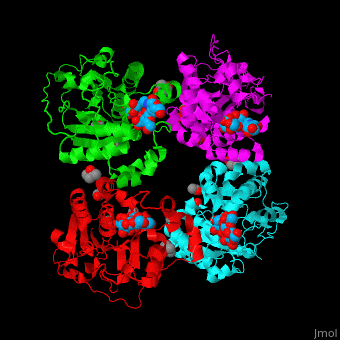Function
Sialyltransferase (SIT) is involved in maintaining or increasing cell surface sialysation which contributes to adhesive cellular interactions and thus to the growth and differentiation of hematopoietic progenitor cells[1].
Relevance
Elevated SIT activity leads to overexpression of cell surface sialic acids and contributes to many disease developments such as cancer and inflammation[2].
Structural highlights
The biological assembly of α-2,3-sialyltransferase is (2x61). The at the C-terminal of SIT[3]. . Water molecules shown as red spheres.

